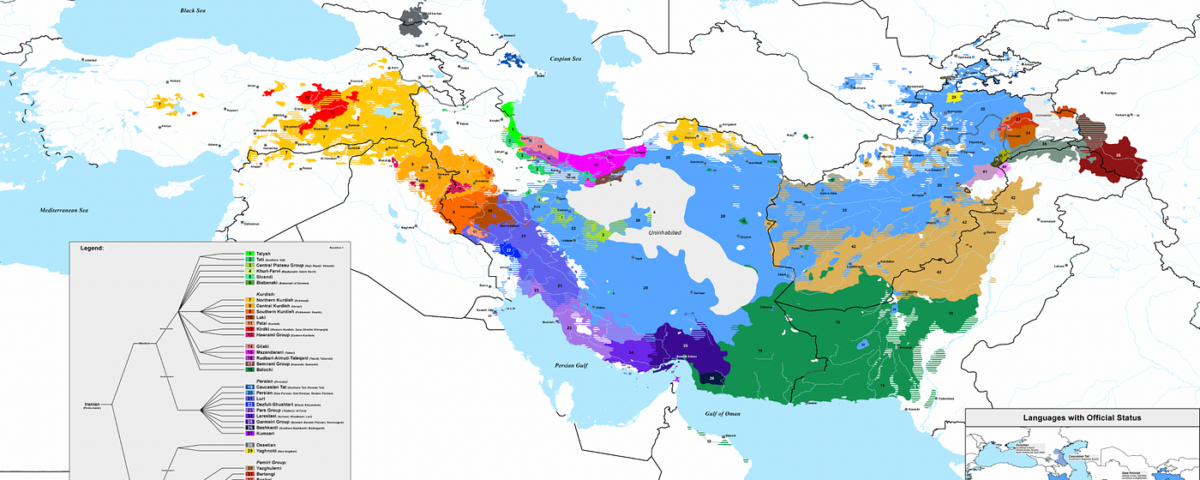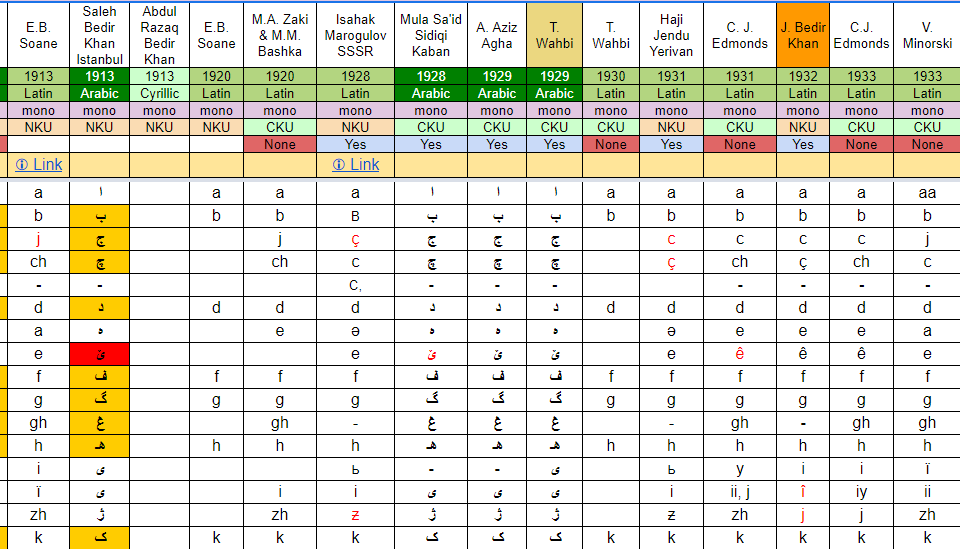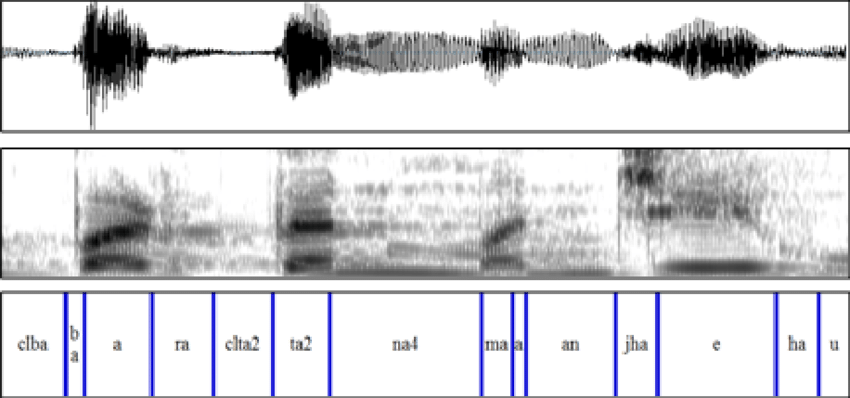A Comparison of KUAL
A Comparison of KUAL

KUAL Yekgirtú in comparison with Arabic, Persian, and Turkish Alphabet
The Kurdish Unified Alphabet (KUAL), also known as Yekgirtú, represents a significant step forward in the standardization and modernization of Kurdish writing. Unlike traditional Kurdish scripts based on Arabic and Persian alphabets, or the Turkish Latin alphabet, KUAL is designed specifically to address the unique phonetic and orthographic needs of the Kurdish language across its diverse dialects. This page provides a comparative overview of KUAL Yekgirtú alongside the Arabic, Persian, and Turkish alphabets, highlighting the differences, advantages, and challenges associated with each.
Overview of the Different Alphabets
-
KUAL Yekgirtú (Kurdish Unified Alphabet)
- Script Type: Modified Latin-based
- Character Set: 34 characters, including unique diacritics and modified letters to represent Kurdish sounds.
- Features: Phonemic consistency, Unicode compatibility, easy digital integration, support for all Kurdish dialects (Kurmanji, Sorani, Hewramí, etc.), and adaptability for modern communication needs.
- Purpose: To unify Kurdish writing and promote the Kurdish language across digital and educational platforms.
-
Arabic Alphabet
- Script Type: Abjad (consonant-based script)
- Character Set: 28 letters, written from right to left.
- Features: Primarily represents consonants, with short vowels indicated by diacritics, which are often omitted in standard writing.
- Usage in Kurdish: Historically adapted for Sorani Kurdish (Iraq and Iran). Modified to include additional letters for Kurdish sounds not present in Arabic, but lacks consistency and phonetic accuracy for Kurdish dialects.
- Challenges: Difficulties in representing all Kurdish sounds, lack of support for all dialects, and limited adaptability to digital formats.
-
Persian Alphabet
- Script Type: Modified Arabic-based script
- Character Set: 32 letters, with four additional letters compared to the Arabic script.
- Features: More phonetic than the Arabic script but still primarily consonant-based with incomplete representation of vowels.
- Usage in Kurdish: Adapted for Sorani Kurdish with modifications to include Kurdish-specific sounds. However, similar challenges as the Arabic script in terms of digital compatibility and comprehensive representation of all Kurdish dialects.
- Challenges: Inconsistent representation across dialects, complex script rules, and challenges in digital and modern media usage.
-
Turkish Alphabet
- Script Type: Latin-based
- Character Set: 29 characters, modified to represent Turkish phonemes.
- Features: Phonemic writing system, left-to-right orientation, and fully compatible with digital platforms.
- Usage in Kurdish: Influenced the Kurmanji Kurdish script in Turkey, with adaptations to represent Kurdish sounds. Easier to learn and use digitally than Arabic and Persian scripts but lacks specific letters for all Kurdish sounds.
- Challenges: Limited in representing the full range of Kurdish phonemes, particularly for dialects like Sorani and Hewramí.
The Kurdish Unified Alphabet (KUAL) Yekgirtú emerges as a superior choice for a standardized Kurdish writing system in the 21st century. Its compatibility with digital platforms, phonetic consistency, and adaptability for all Kurdish dialects make it the most viable option for unifying Kurdish speakers worldwide. Unlike the Arabic, Persian, and Turkish scripts, which have been adapted with varying success for Kurdish use, KUAL Yekgirtú is specifically designed to meet the linguistic, cultural, and digital needs of the Kurdish people.
By adopting KUAL Yekgirtú, the Kurdish community can achieve greater cohesion in communication, preserve and promote the Kurdish language, and foster a stronger cultural identity in a modern, digital world.
| Yekgirtú (KUAL) | Türkçe | پارسی | عربي |
| A a | A a | آ عا | ا أ |
| B b | B b | ب بـ ـبـ | ب بـ ـبـ |
| C c | Ç ç | چ ـچ ـچـ چـ | چ ـچ ـچـچـ |
| D d | D d | د ـد | د ـد |
| E e | E e | اَ ــَ عَـ | اَ ــَ |
| É é | ? | در پارسی نيست | ليست في العربية |
| F f | F f | ف ـف ـفـ فـ | ف ـف ـفـ فـ |
| G g | G g | گ ـگ ـگـ گـ | ليست في العربية |
| H h | H h | ه ـه ـهـ هـ ، حـ ح ـحـ ـح | ه ـه ـهـ هـ |
| I i | I I | اِ ــِ | اِ ــِ |
| Í í | İ i | يی ـي ـيـ يـ | يی ـي ـيـ يـ |
| J j | C c | ج ـج ـجـ جـ | ج ـج ـجـ جـ |
| Jh jh | J j | ژ ـژ | ليست في العربية |
| K k | K k | ک ـک ـکـ کـ | ک ـک ـکـ کـ |
| L l | L l | ل لـ ـل ـلـ | ل لـ ـل ـلـ |
| ll | ? | در پارسی نيست | ليست في العربية |
| M m | M m | م ـم ـمـ مـ | م ـم ـمـ مـ |
| N n | N n | ن ـن ـنـ نـ | ن ـن ـنـ نـ |
| O o | O o | در پارسی نيست | ليست في العربية |
| P p | P p | پ ـپ ـپـ پـ | ليست في العربية |
| Q q | YOK | ق قـ ـقـ ـق ،غ غـ ـغـ | ق قـ ـقـ ـق |
| R r | R r | ر ـر | ر ـر |
| rr | YOK | در پارسی نيست | ليست في العربية |
| S s | S s | س ، ص ، ث ، | س سـ ـس ـسـ |
| Sh sh | Ş ş | ش ـشـ شـ ـش | ش ـشـ شـ ـش |
| T t | T t | ت تـ ـتـ ـت ، ط | ت تـ ـتـ ـت |
| U u | U u | اُ ــُ عُـ | اُ ـُـ |
| Ú ú | Ü ü | صدای کشيده و | وو |
| Ù ù | YOK | در پارسی نيست | ليست في العربية |
| V v | V v | در پارسی نيست | ليست في العربية |
| W w | YOK | و | و |
| X x | YOK | خ خـ ـخـ ـخ | خ خـ ـخـ ـخ |
| Y y | Y y | ی ـيـ ـی يـ | ی ـيـ ـی يـ |
| Z z | Z z | ز ، ذ ، ظ ، ض | ز ـز |
| le Kurdí níye | Ğ ğ | ||
| le Kurdí níye | Ö ö | ||
| le Kurdí níye | ث ـثـ ثـ | ||
| le hendí zarawey Kurdí weko wishey bégane heye | حـ ح ـحـ ـح | ||
| le hendí zarawey Kurdí weko wishey bégane heye | غ ـغ ـغـ غـ | ||
| le hendí zarawey Kurdí weko wishey bégane heye | عـ ع ـعـ ـع | ||
| le Kurdí níye | ذ | ||
| le Kurdí níye | ص ـصـ ـص | ||
| le Kurdí níye | ض ضـ ـض | ||
| le Kurdí níye | ط ـطـ ـط | ||
- Prepared by Dilan Roshani


